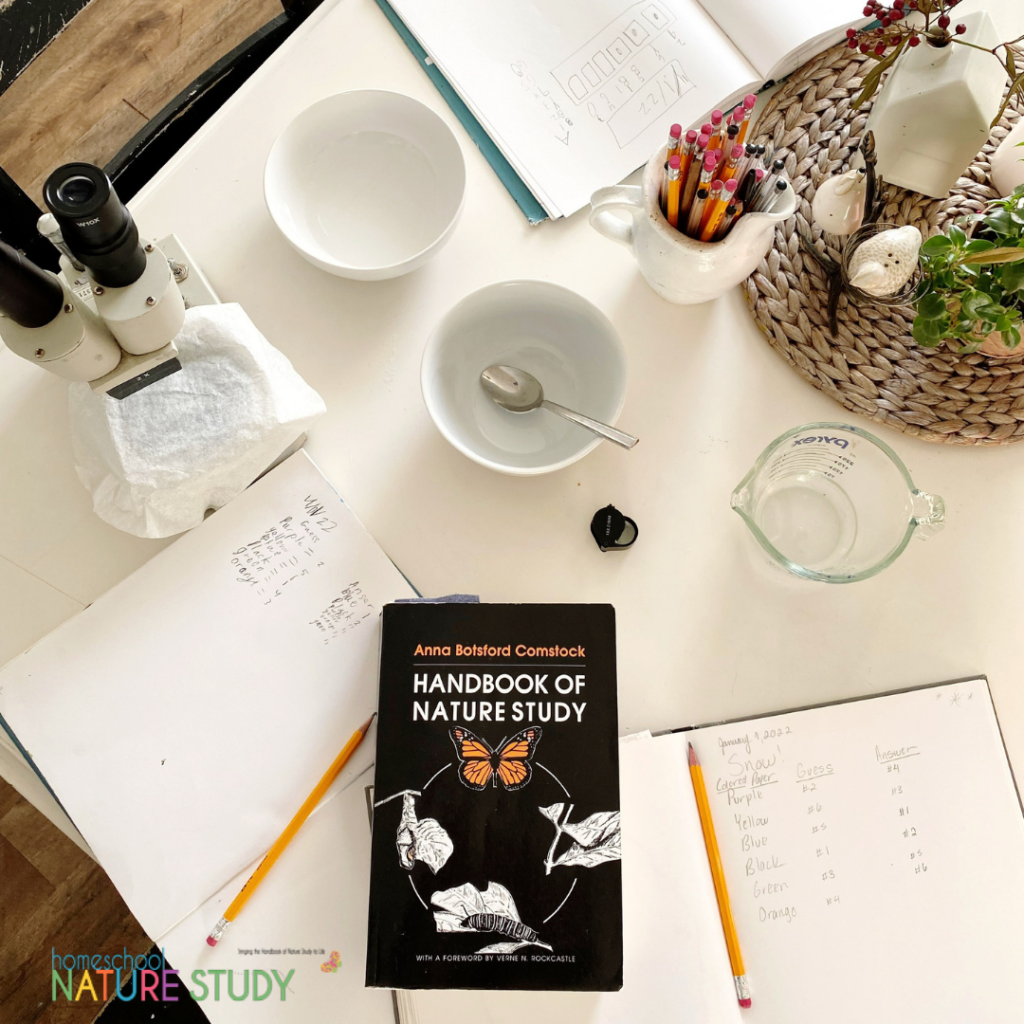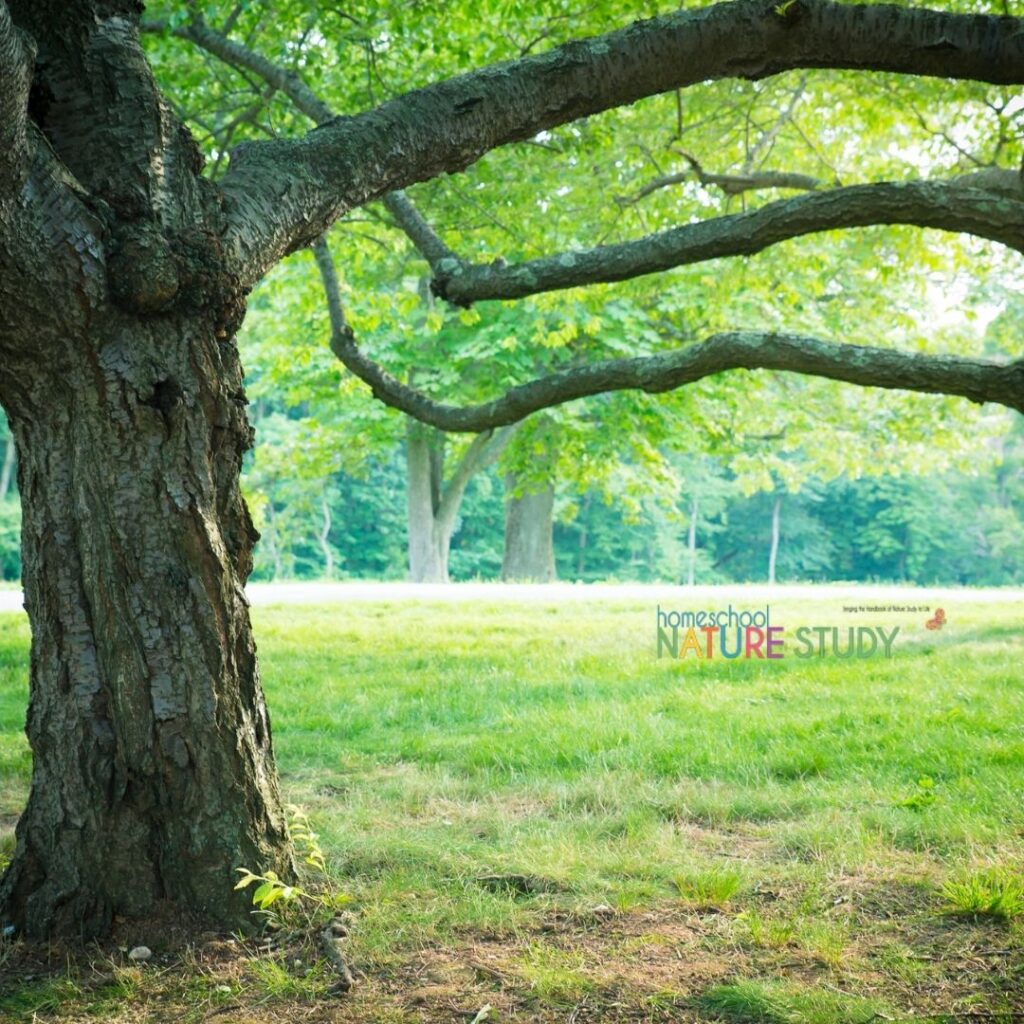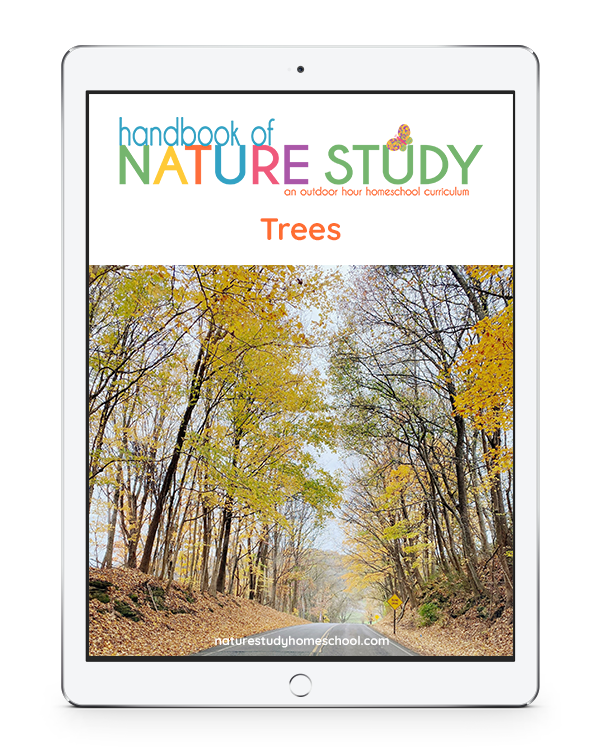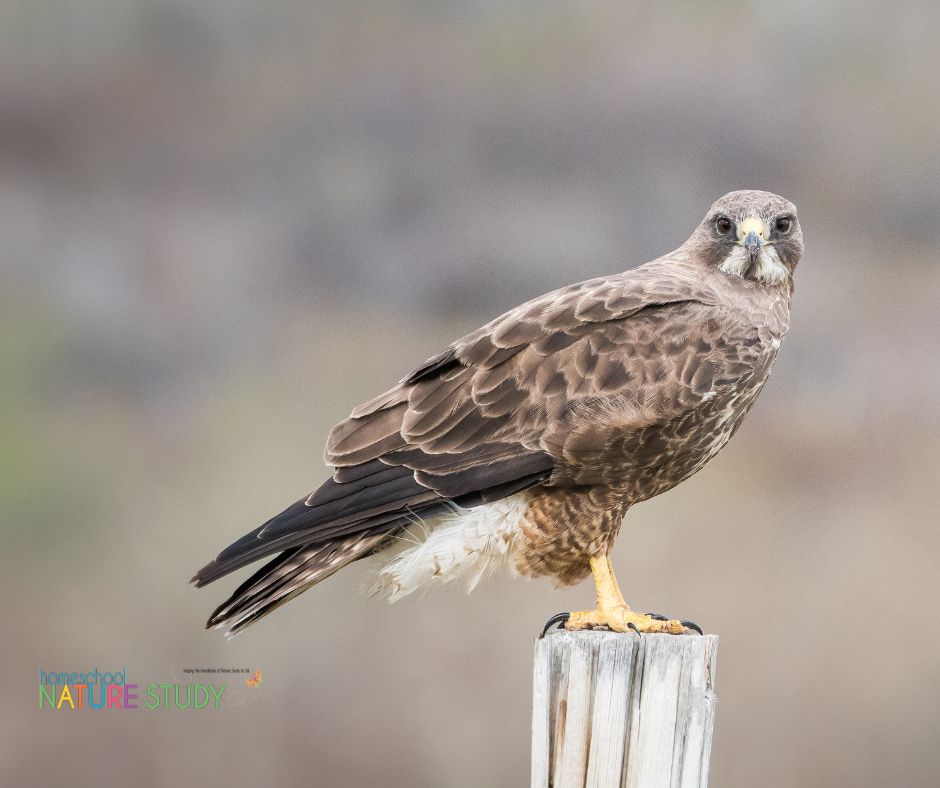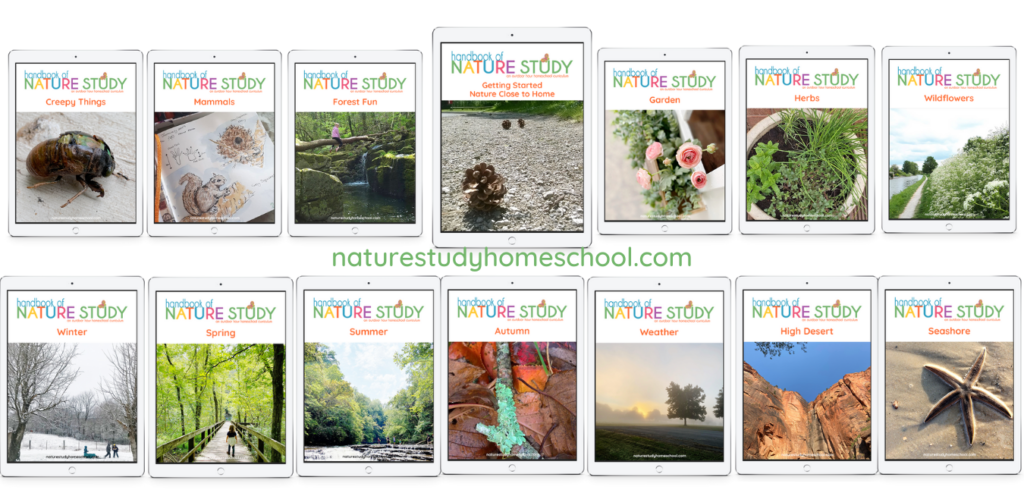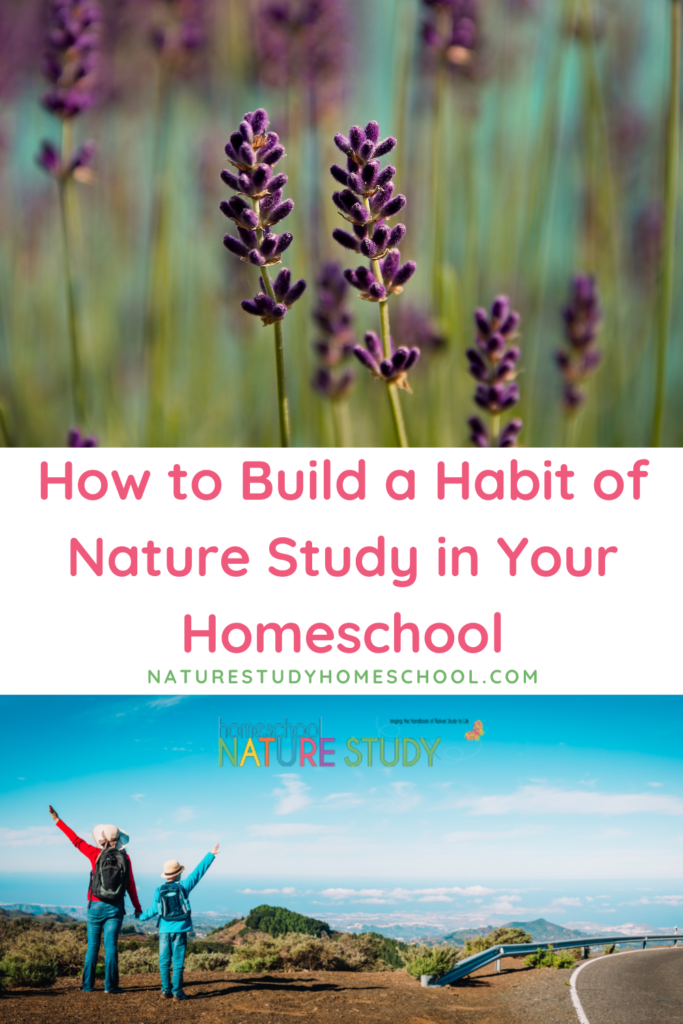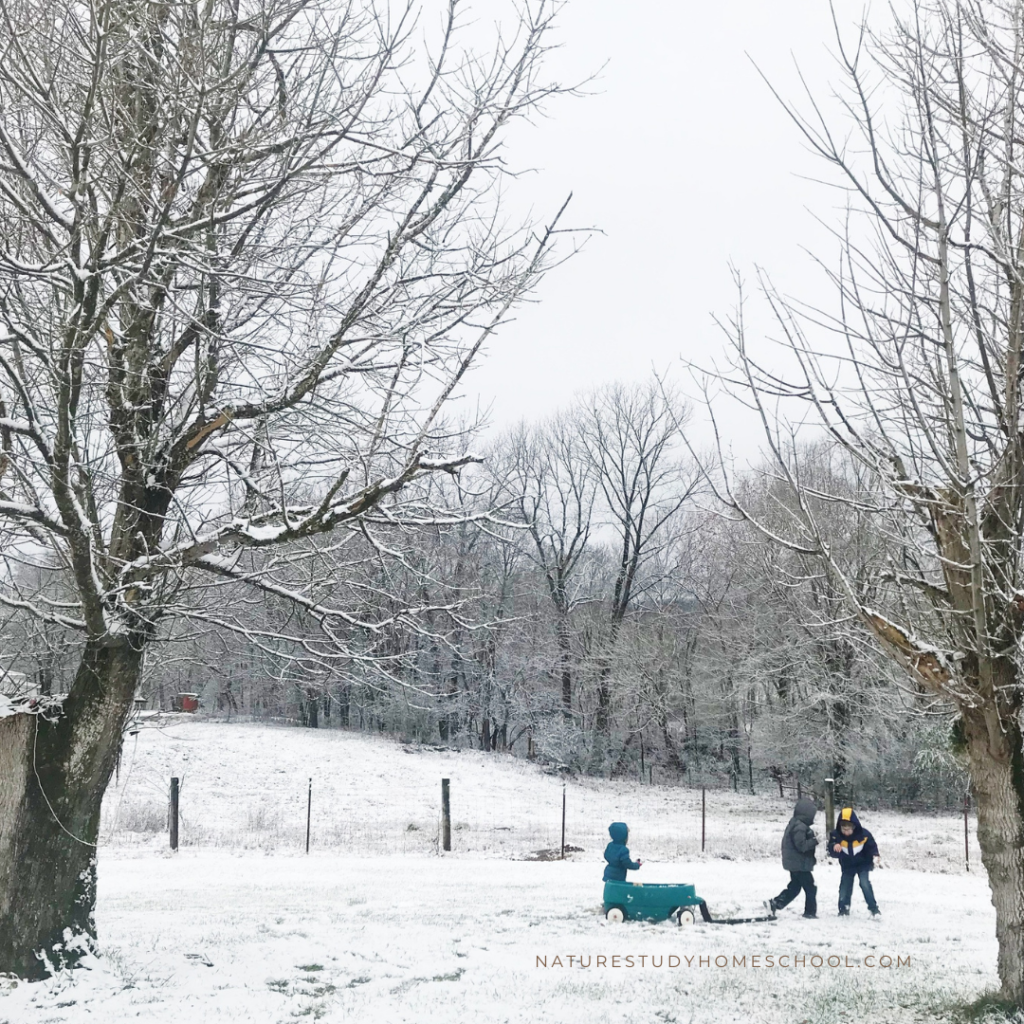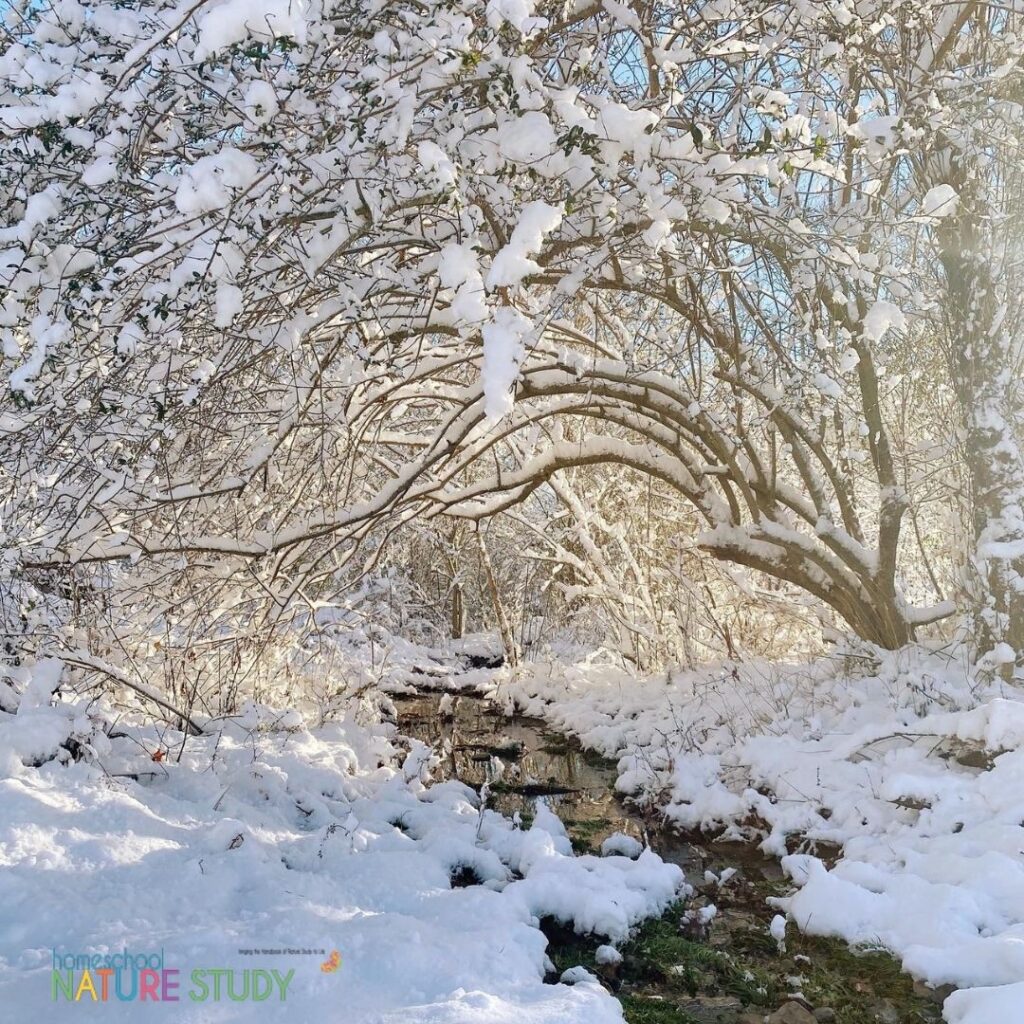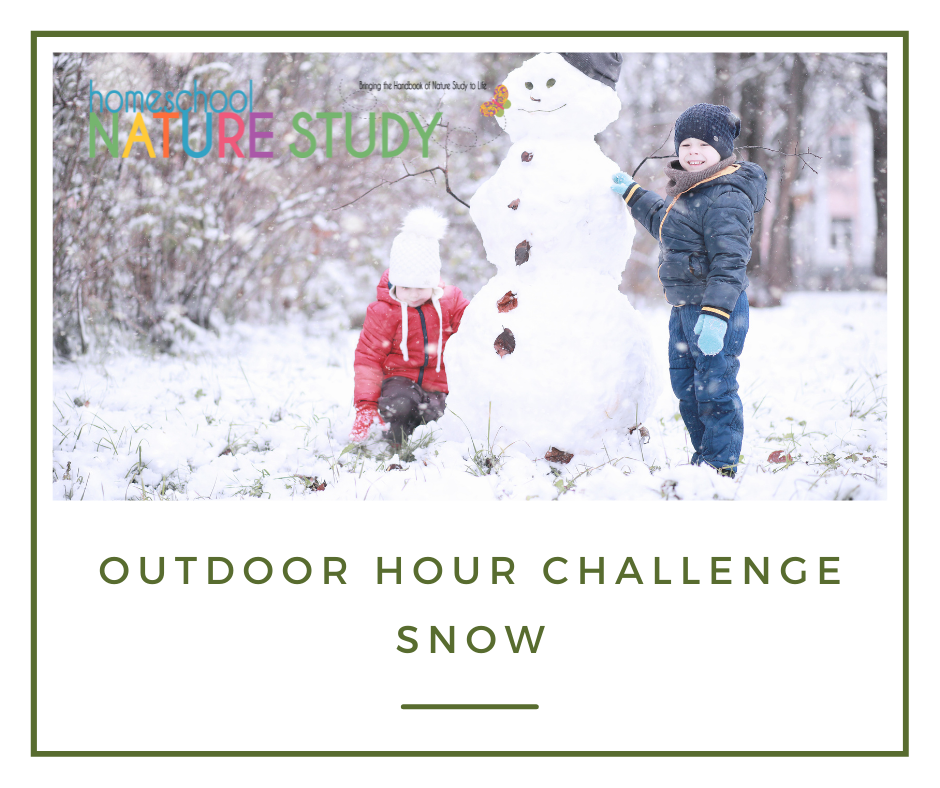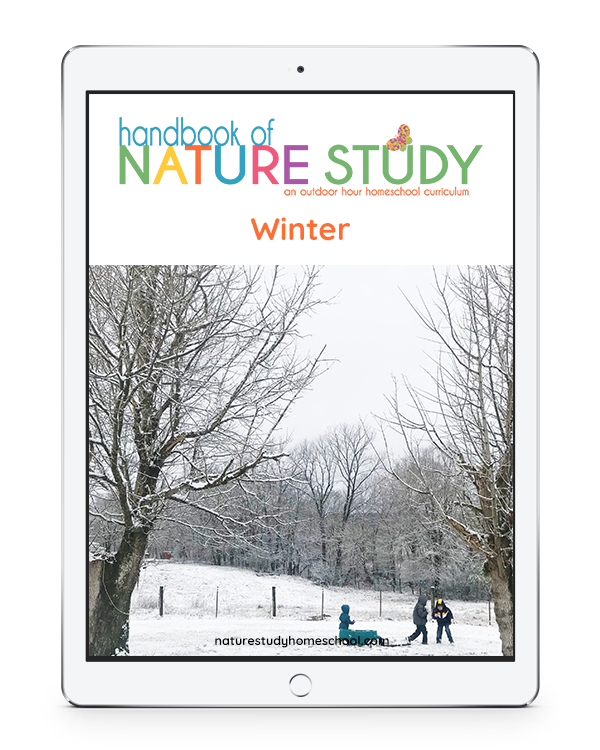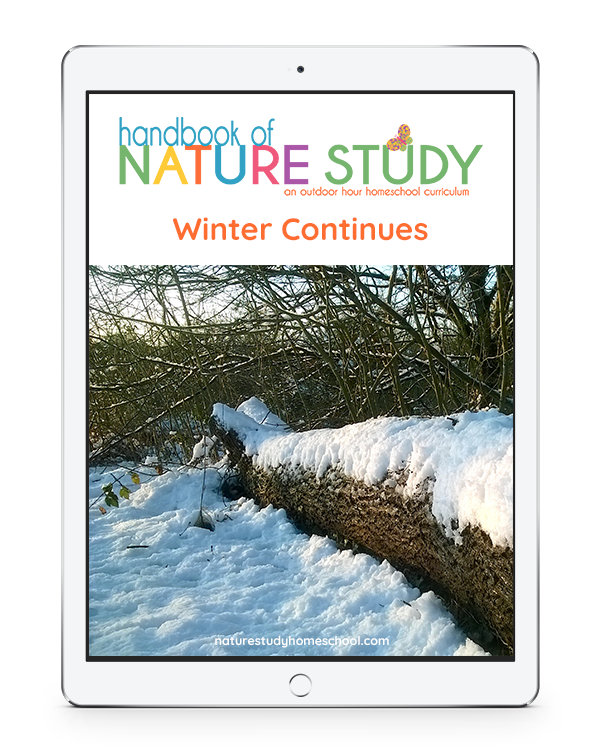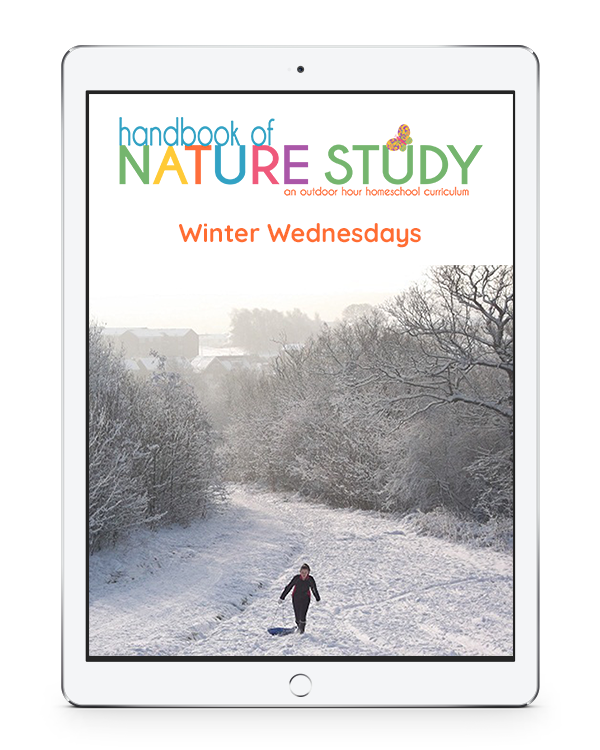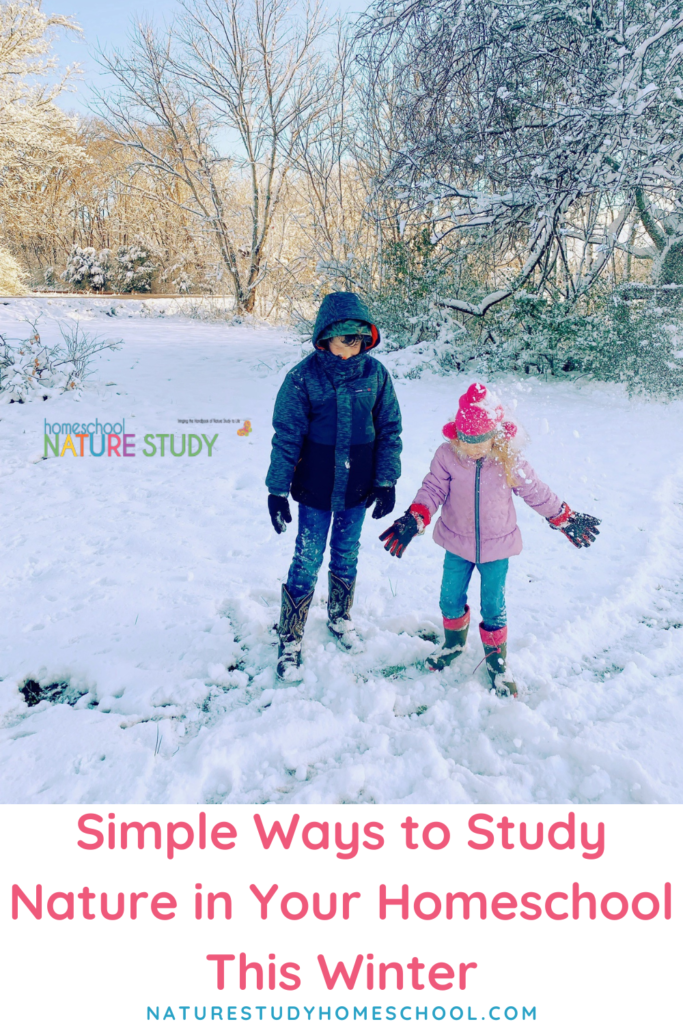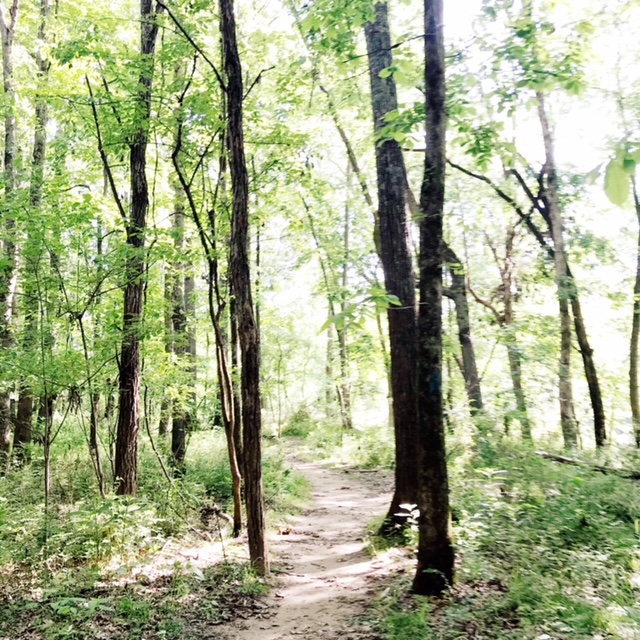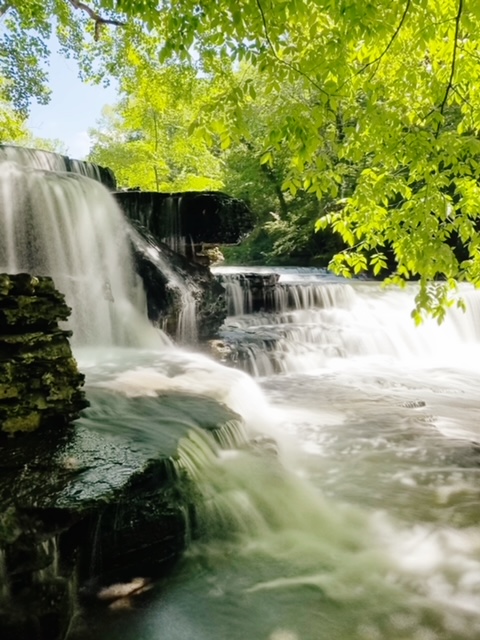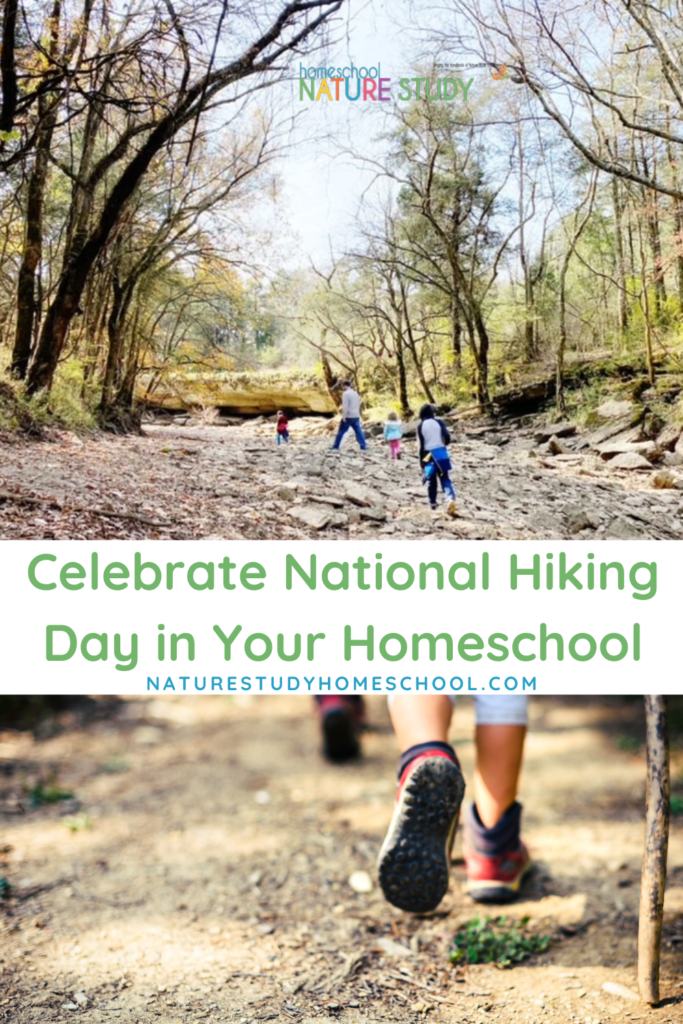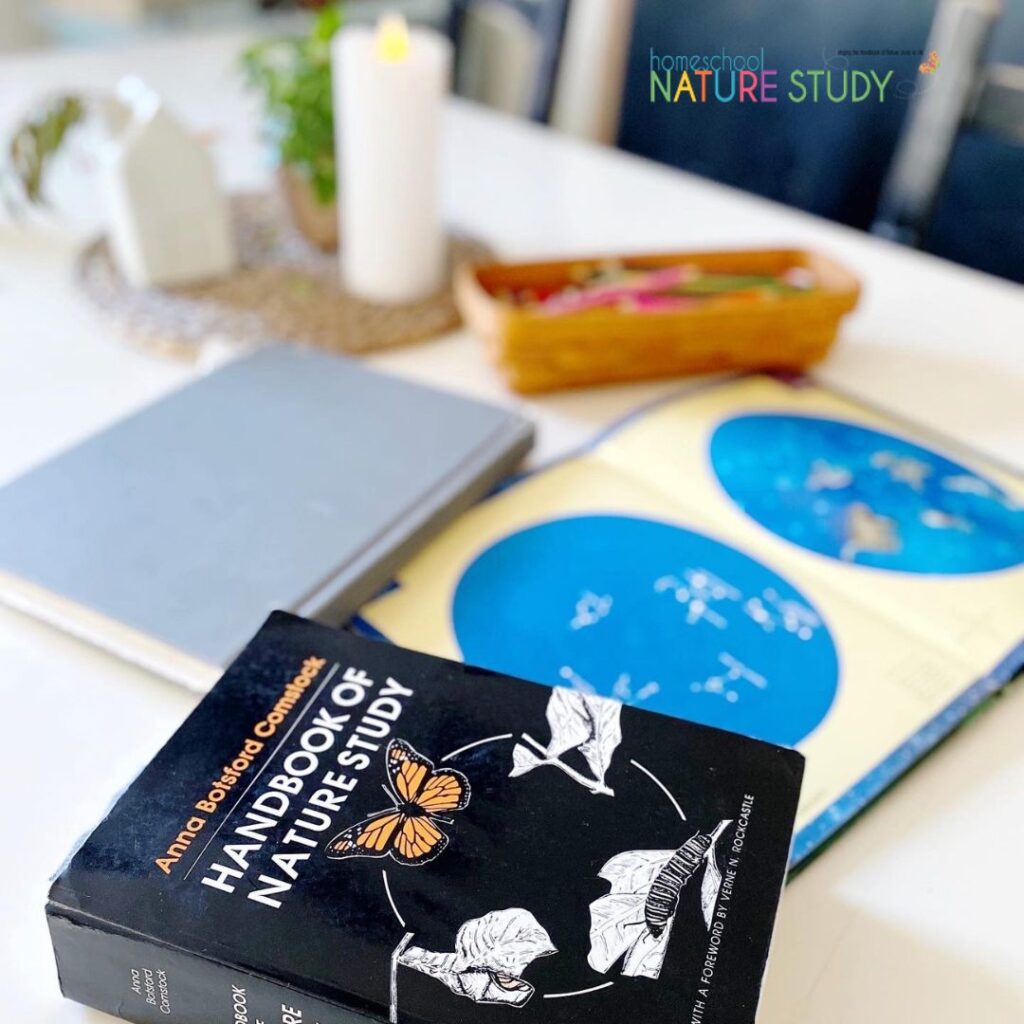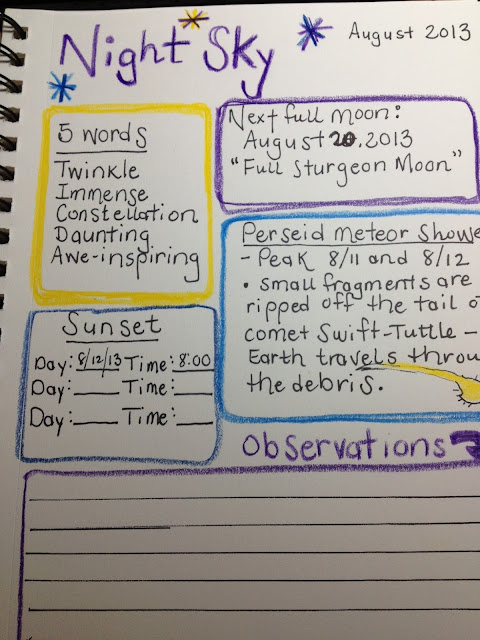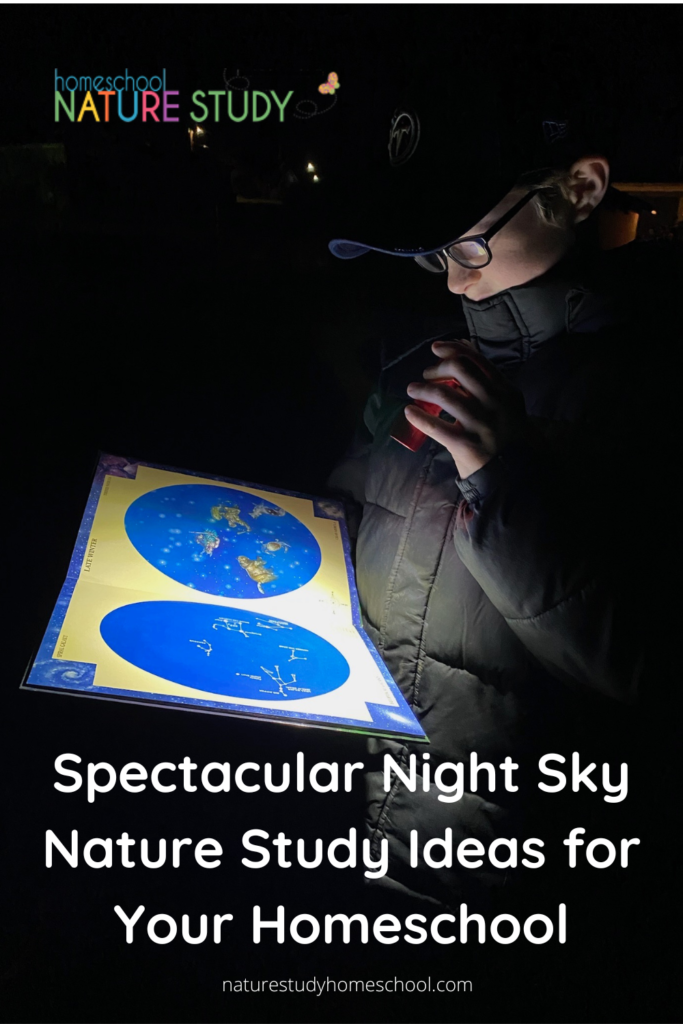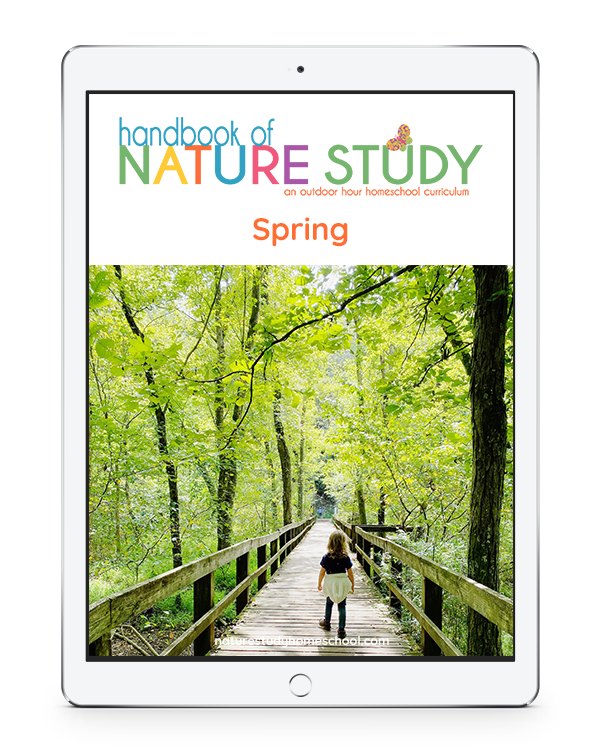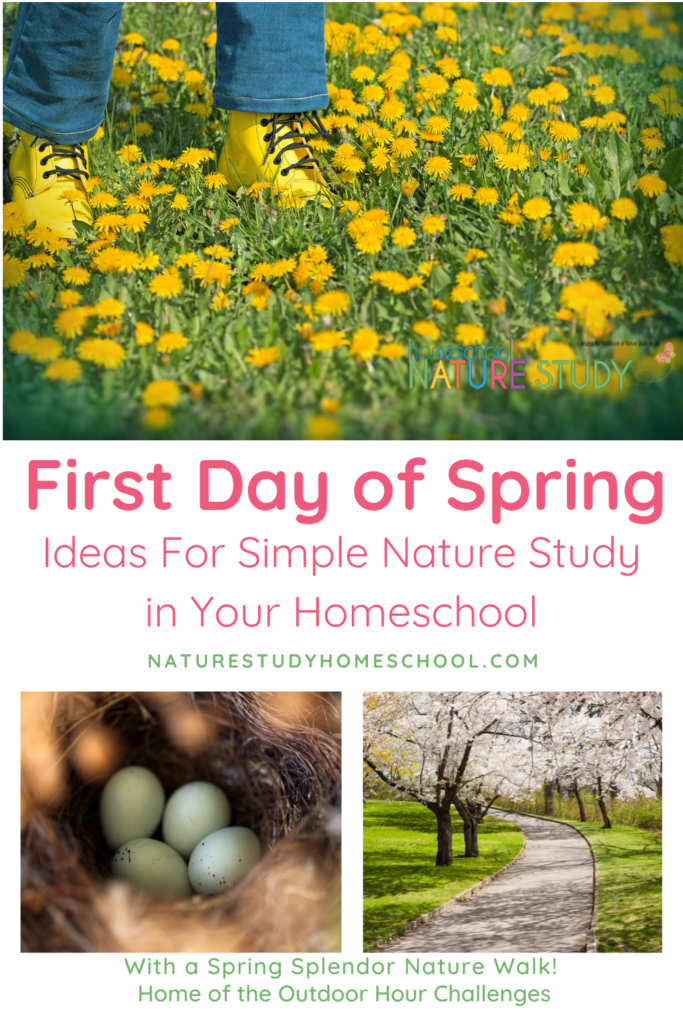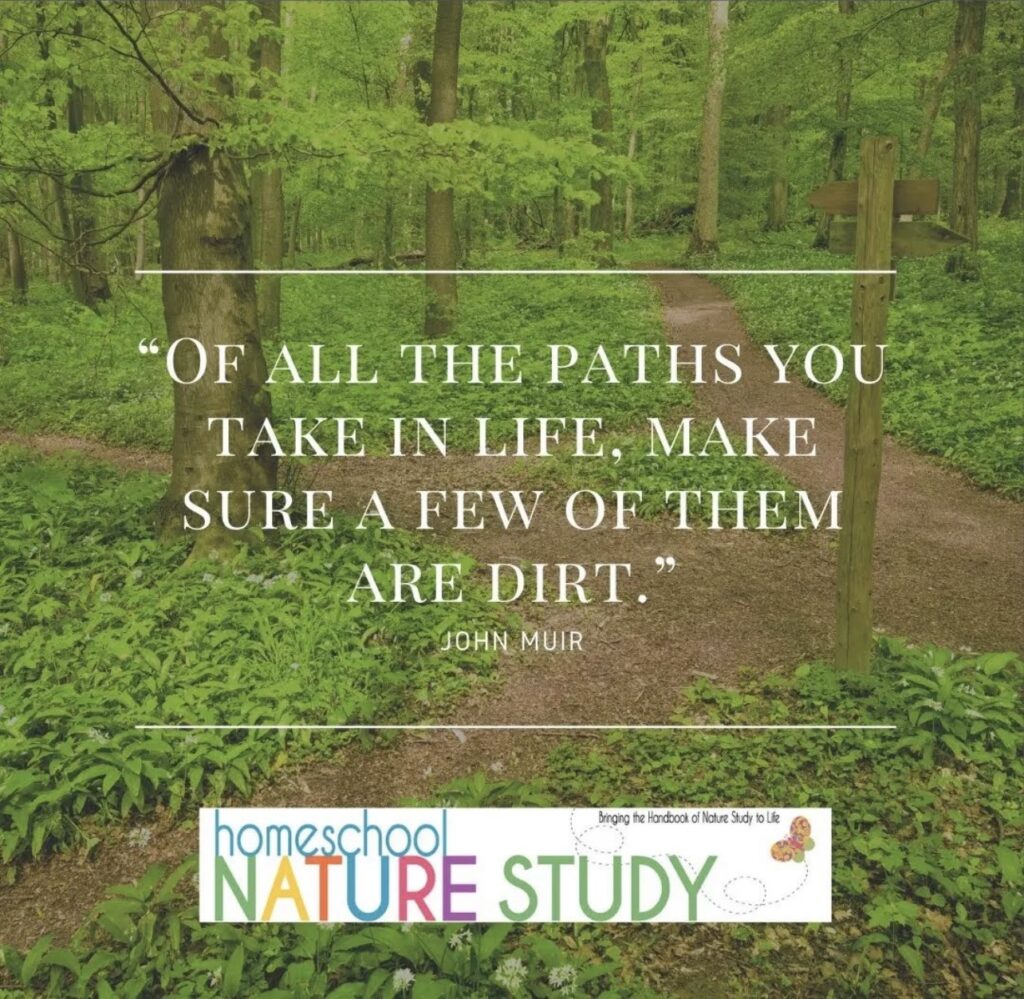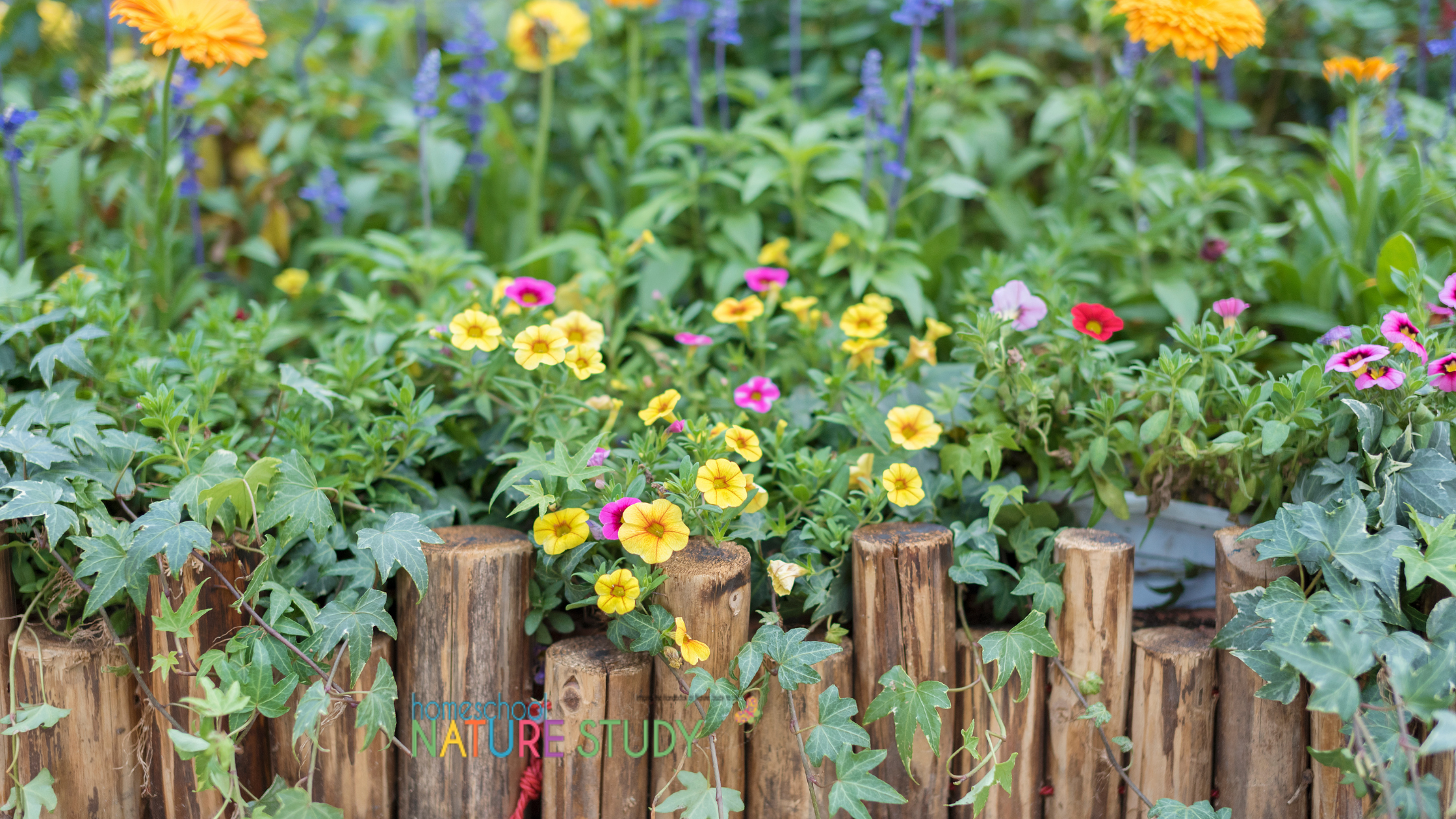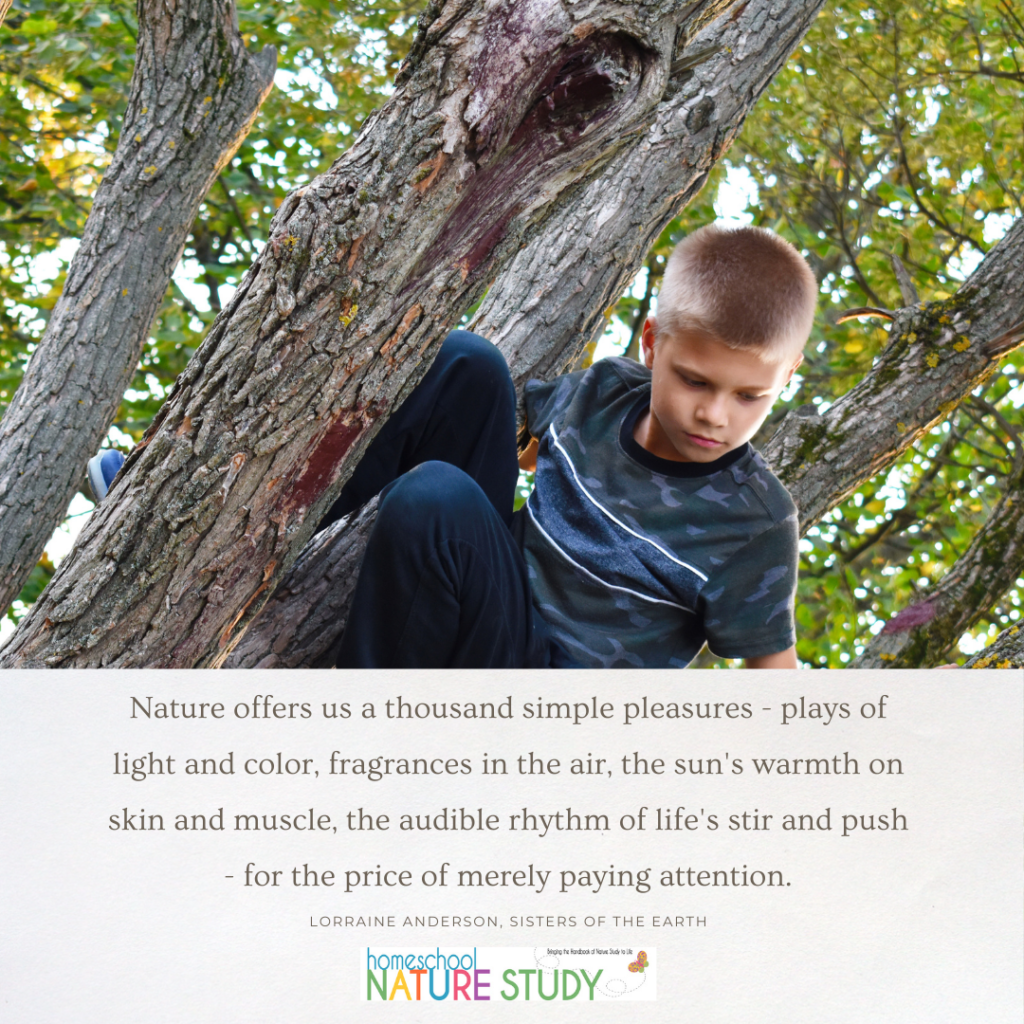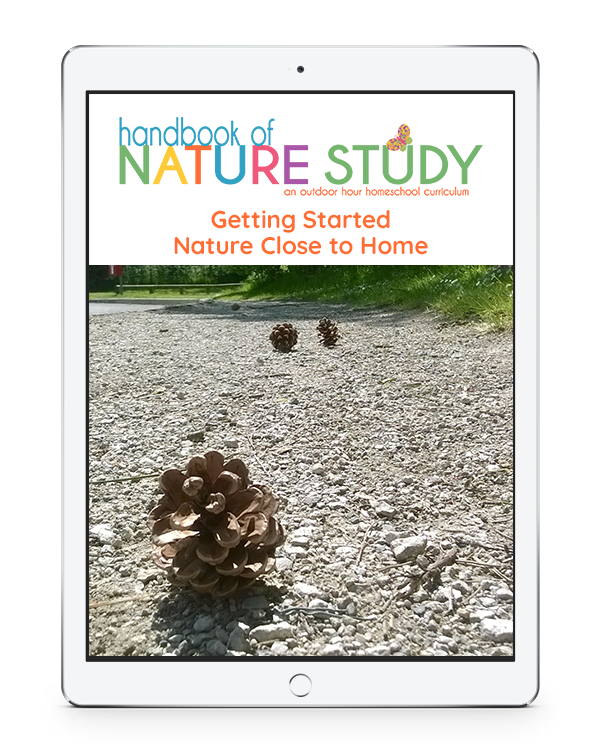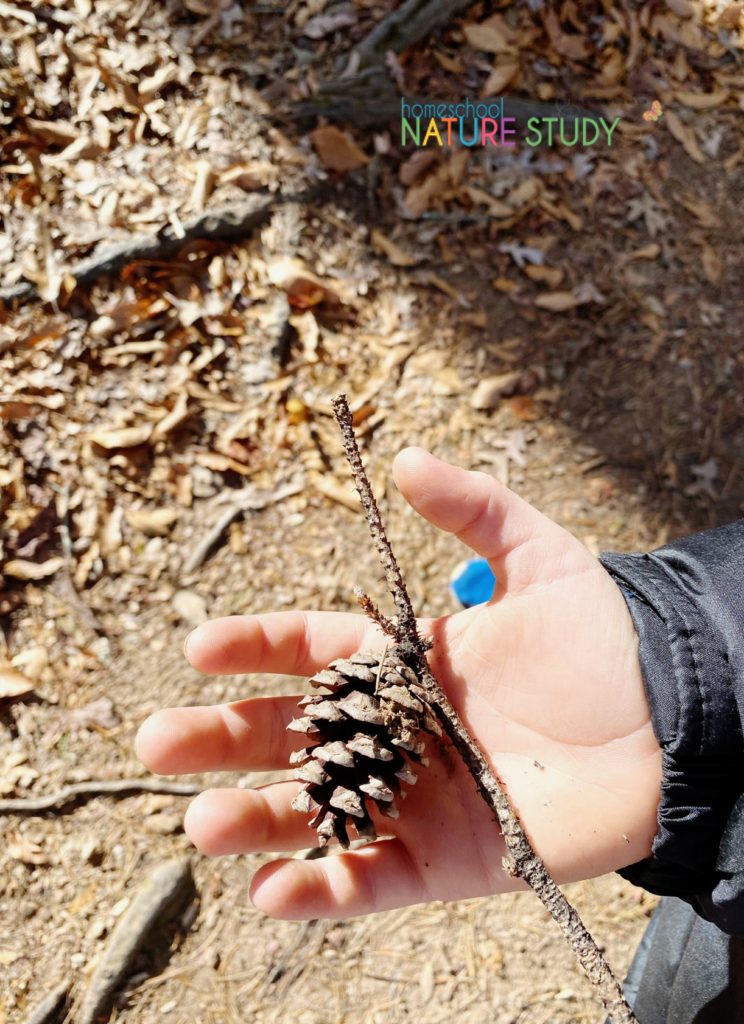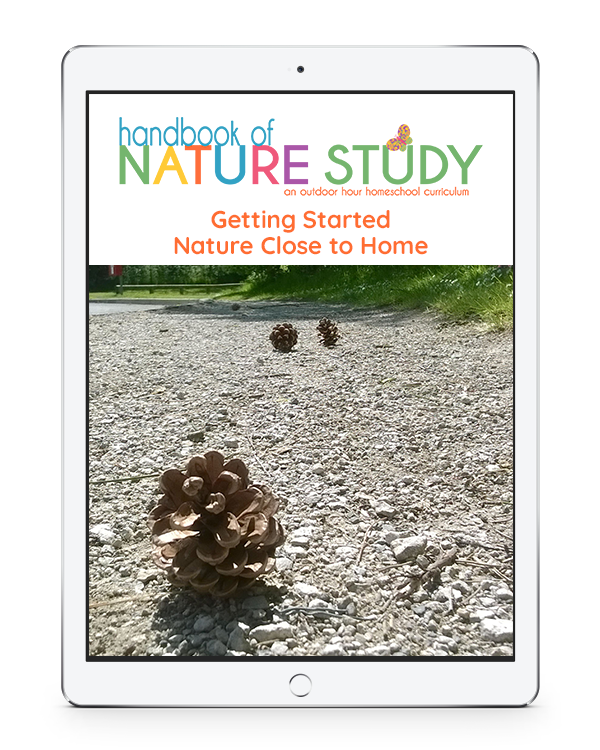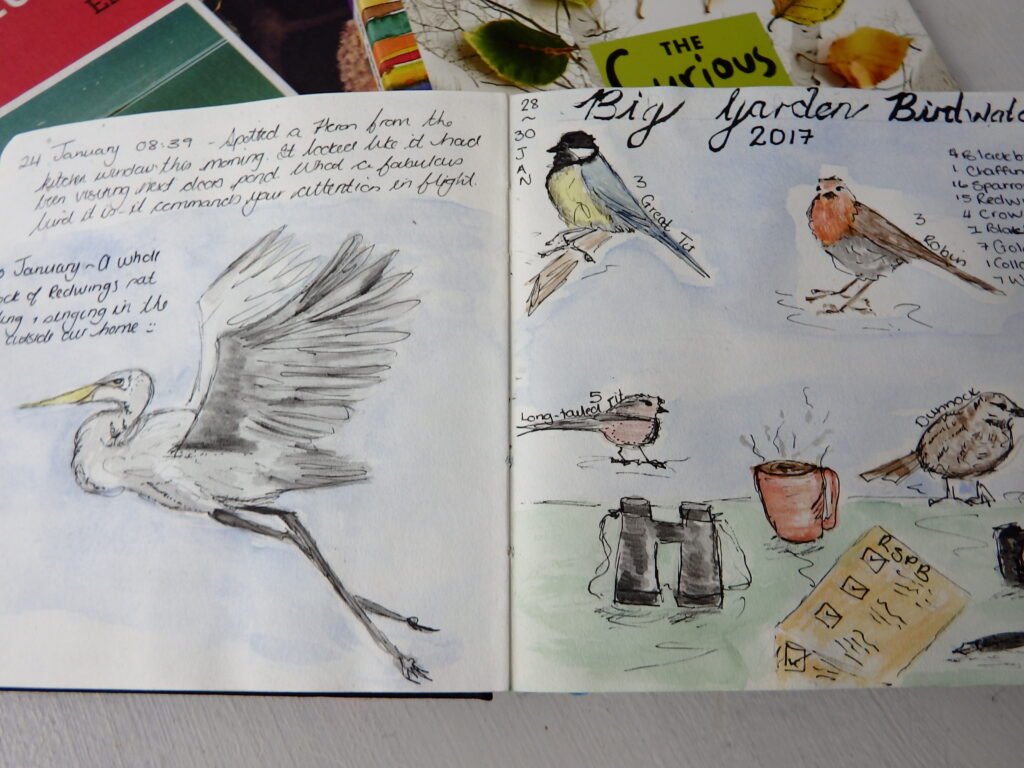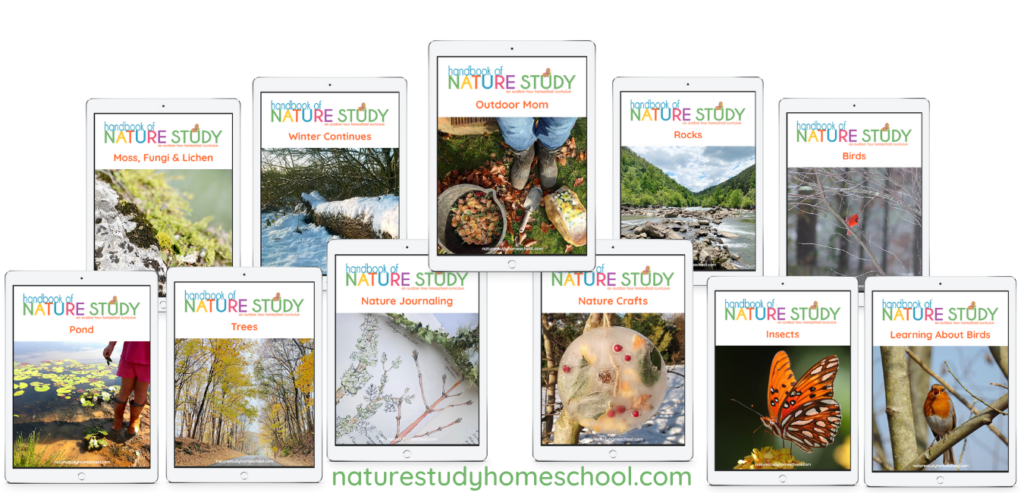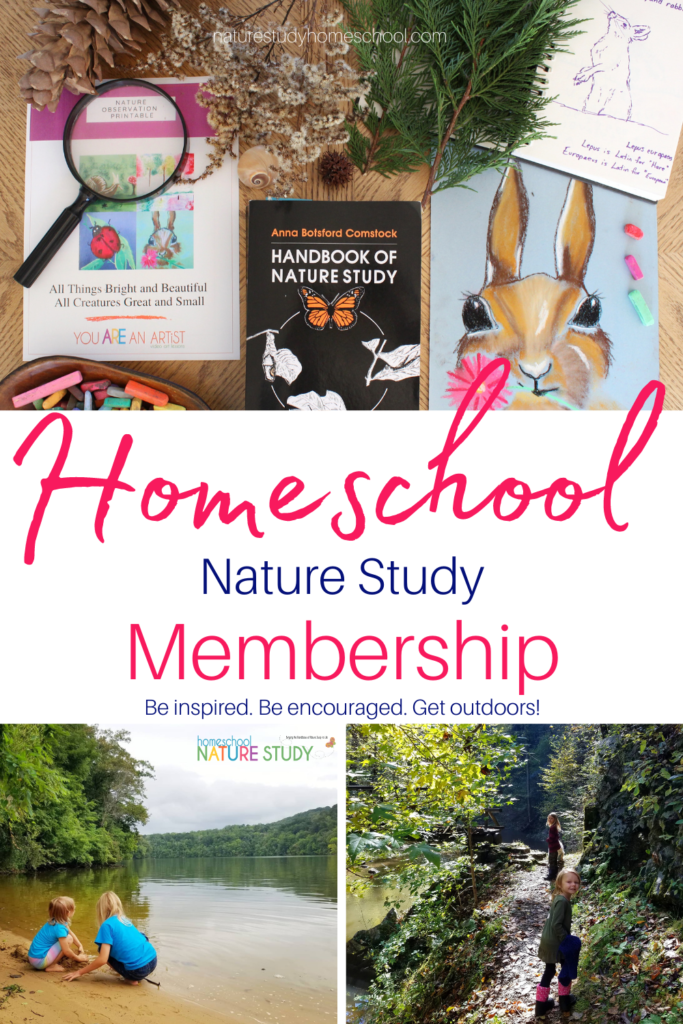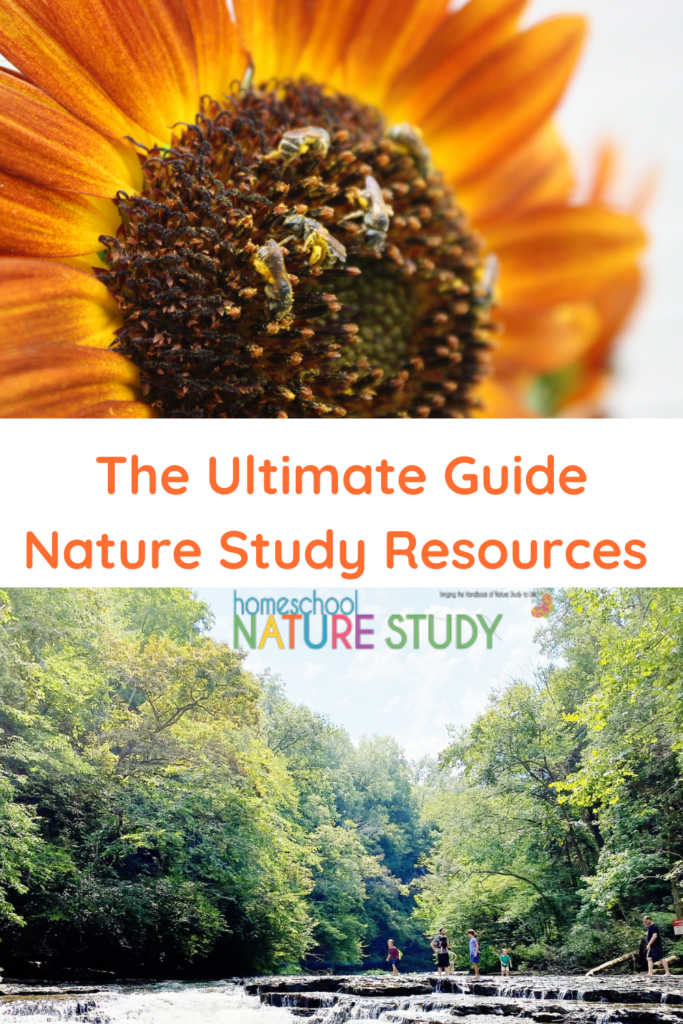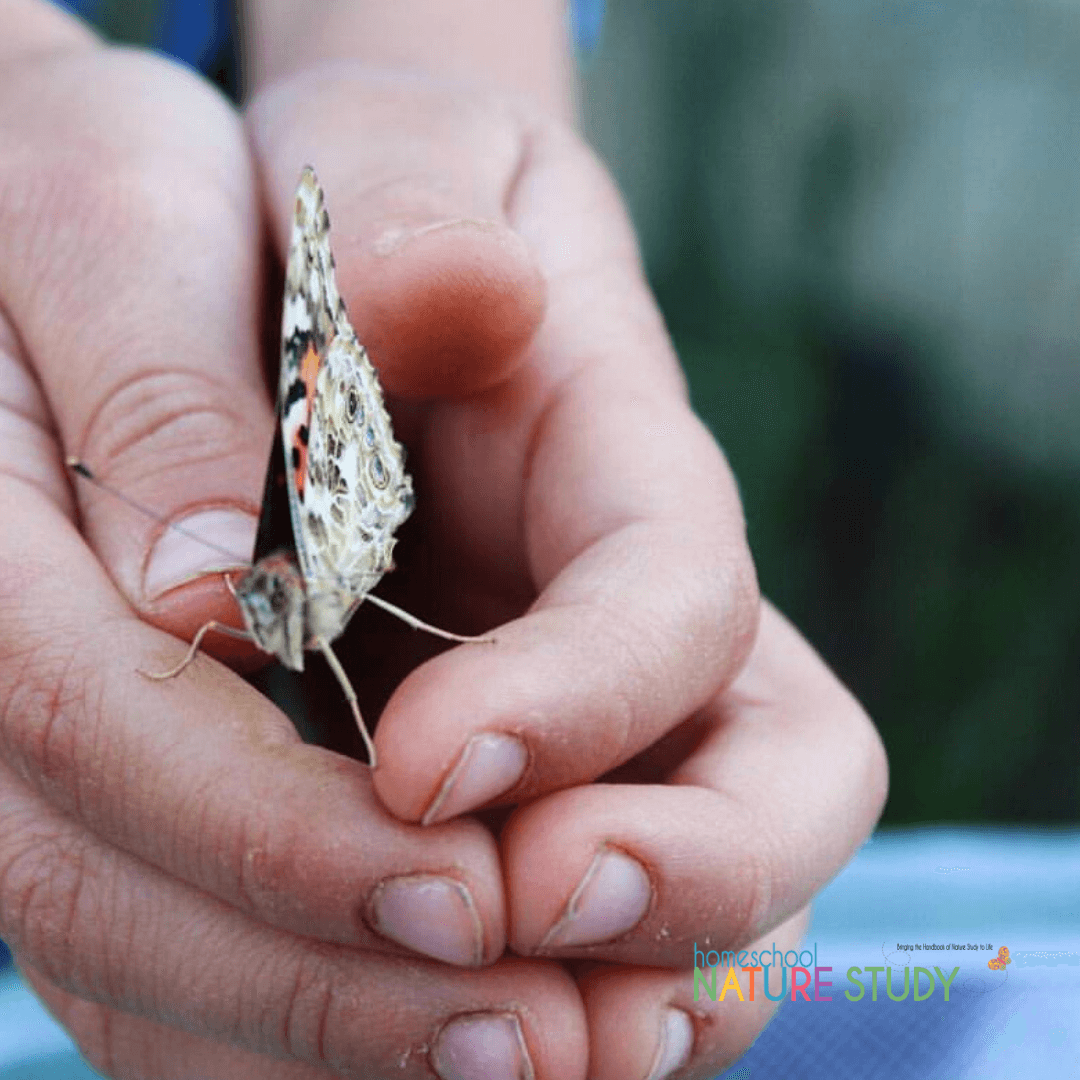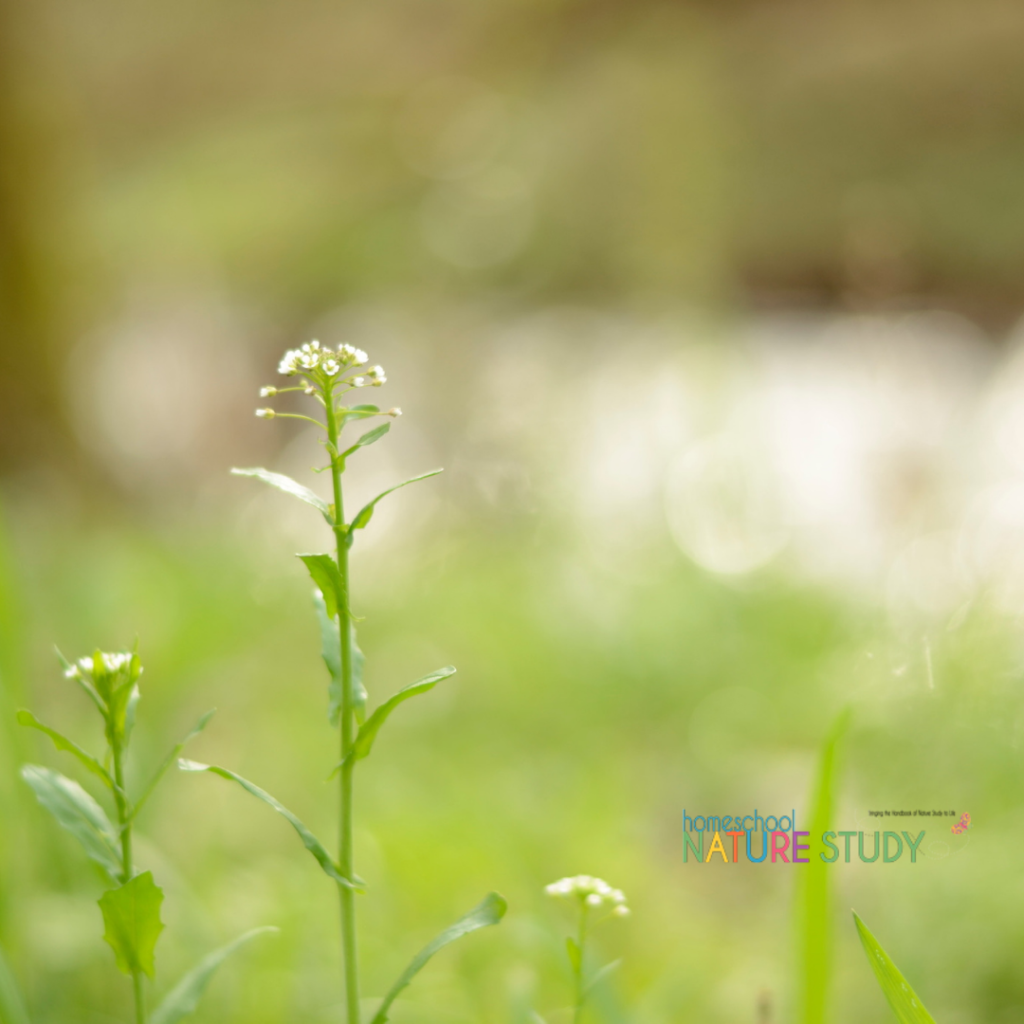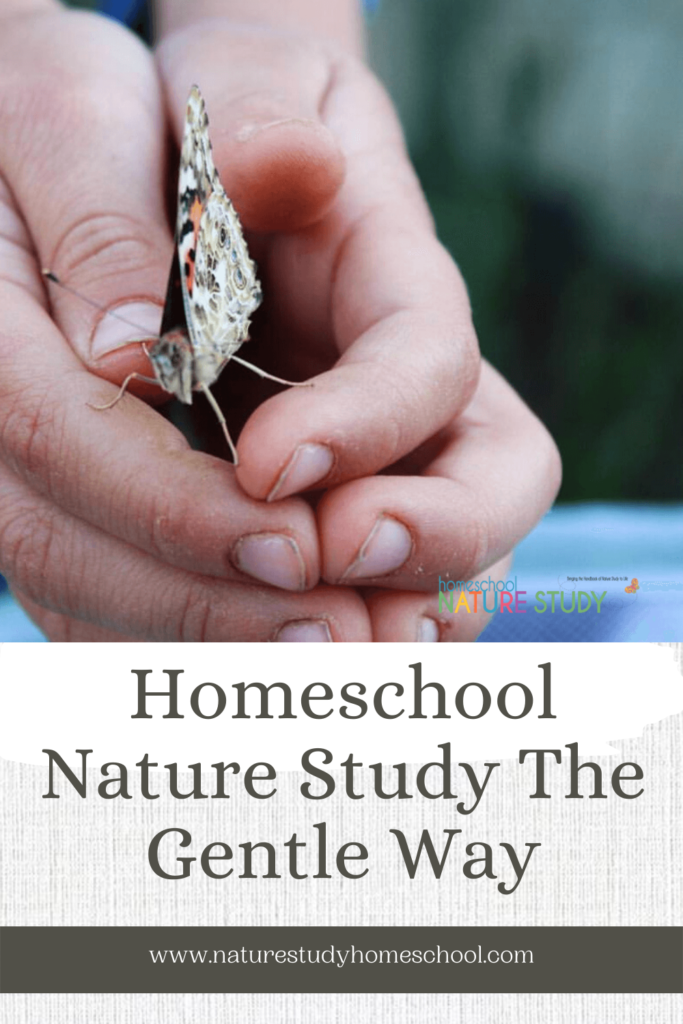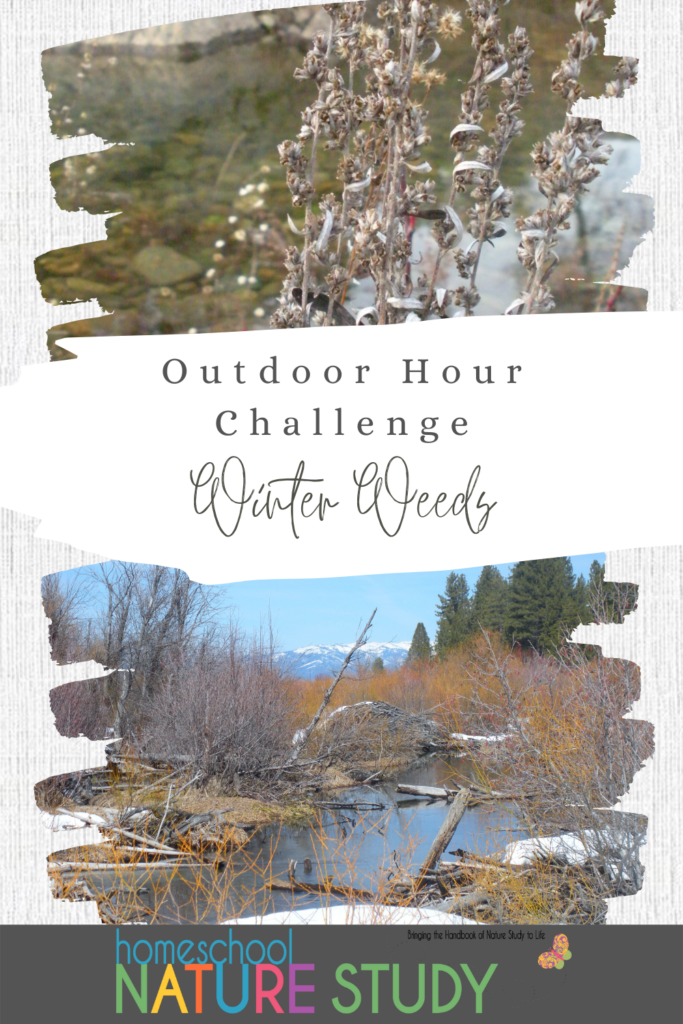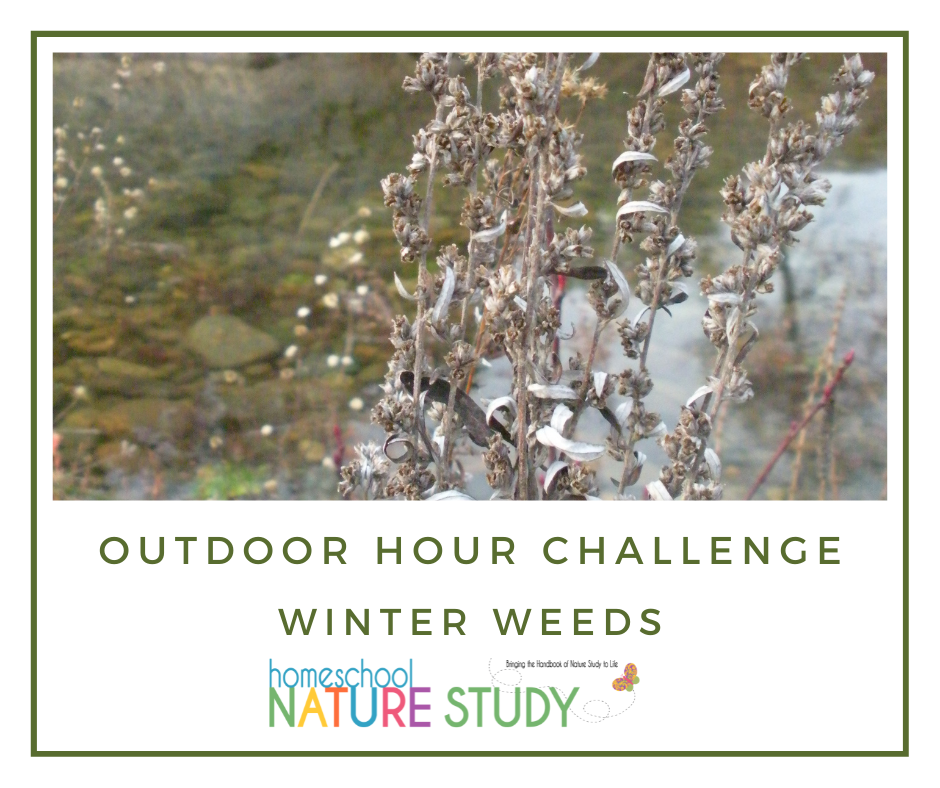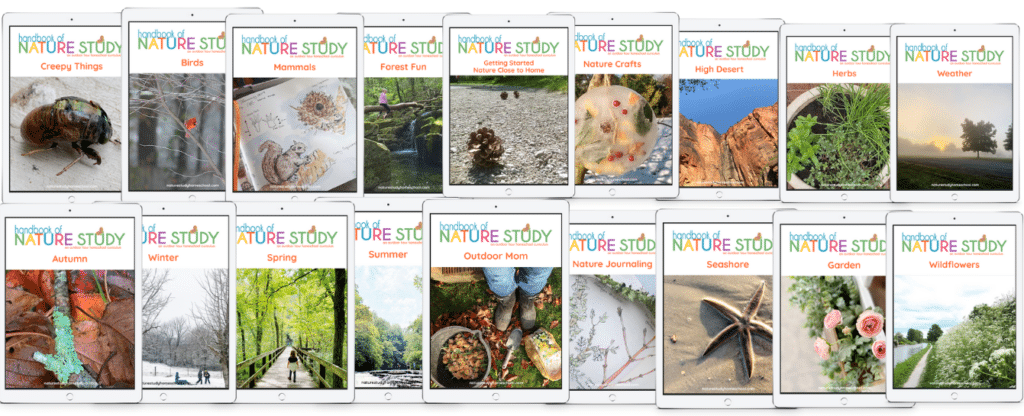Here are some things to consider for your homeschool family nature study. Every family is different so use these tips to get started with simple and joyful Outdoor Hour Challenges.
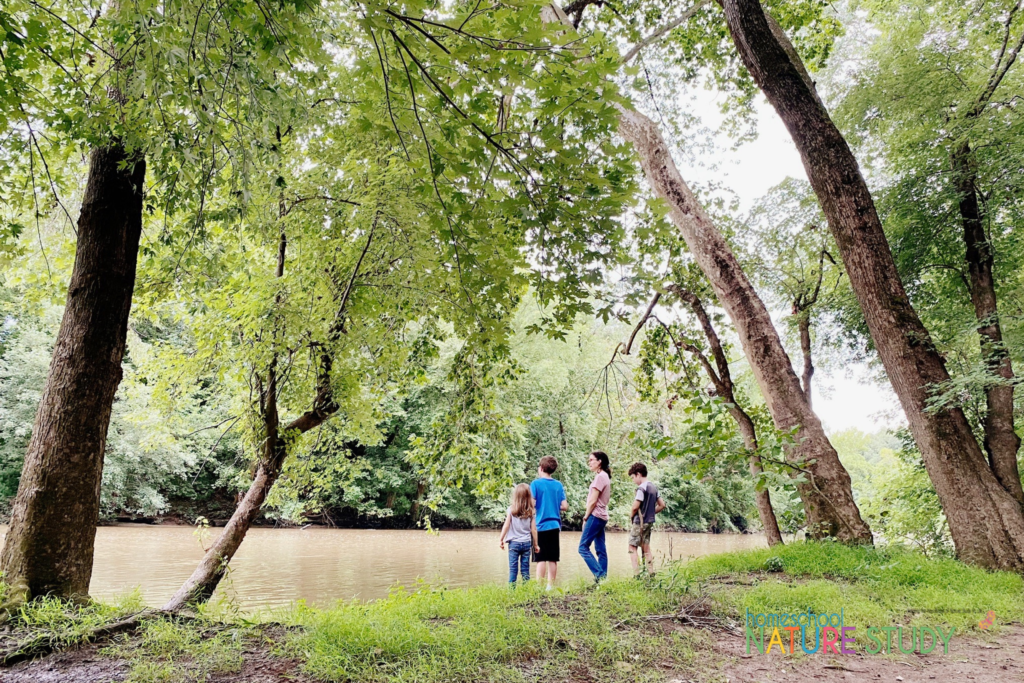
How to Use the Outdoor Hour Challenges For Your Homeschool Family Nature Study
When getting started in homeschool nature study, here are some simple ideas to consider for your outdoor time.
Age of Your Children
- Younger children-try to create exposure and have lots of time in free exploration outdoors
- Older children-provide some structure to the preparation for your outdoor time, allow increased time outdoors, offer short follow up activities if they are interested
Your Particular Backyard Habitat
- Suburban-Assess available trees, shrubs, and garden space. Focus on areas like birds, trees, insects, clouds or other subjects that you can find outside your back door. Container gardening is a great opportunity to create a natural area in even the smallest of backyards or on porches and decks.
- Rural-Opportunity for longer walks each week and increased subjects to study. Perhaps planting a garden or just some child friendly plants like marigolds, sunflowers, beans, or morning glories.
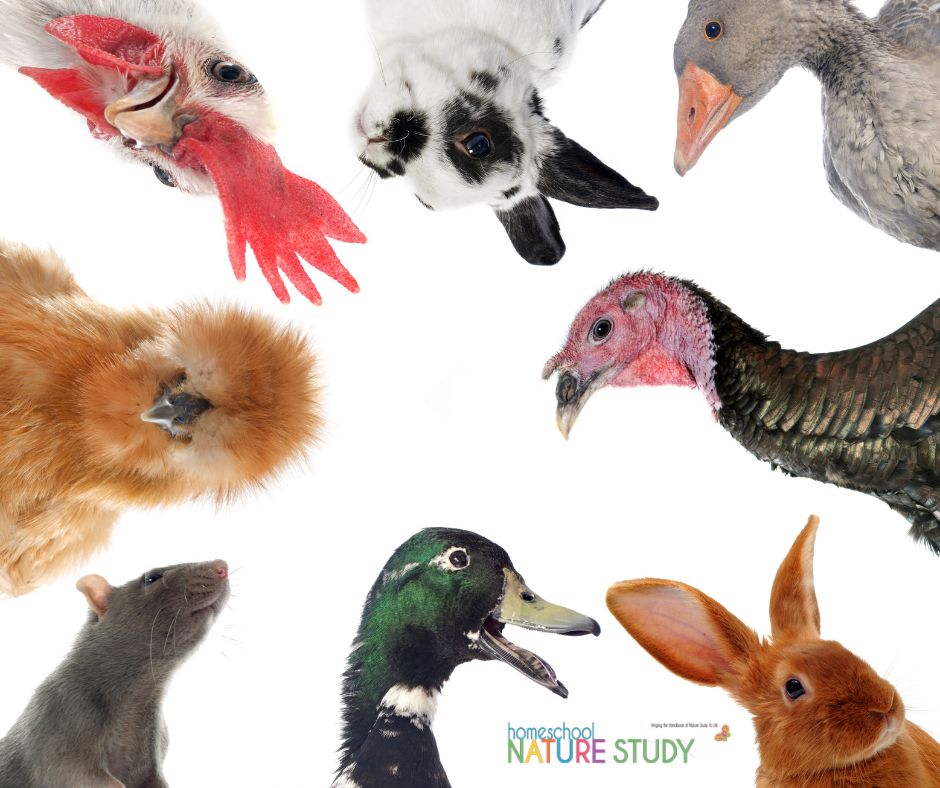
Your Homeschool Family’s Interests
- Follow your child’s interest as much as possible. Observe them as you go about your week and learn what interests them…insects? birds? lizards? mammals?
- Do you have a pet that you can use as the center of your nature study? Cats, dogs, fish, lizards, hamsters all have their place in nature study.
- Do you have access to larger farm animals? Horses, cows, goats, chickens, ducks? Take advantage of what you have at hand.
How much time do you have in your homeschool each week?
- Ideally, you should be able to give an opportunity for outdoor time each day but realistically, you can pencil in one afternoon or part of an afternoon each week for nature study if you make it a priority.
- Many families fit their nature study in as part of other activities. When you are on the way to another activity, can plan on stopping for a short period of time at the park for some nature study?
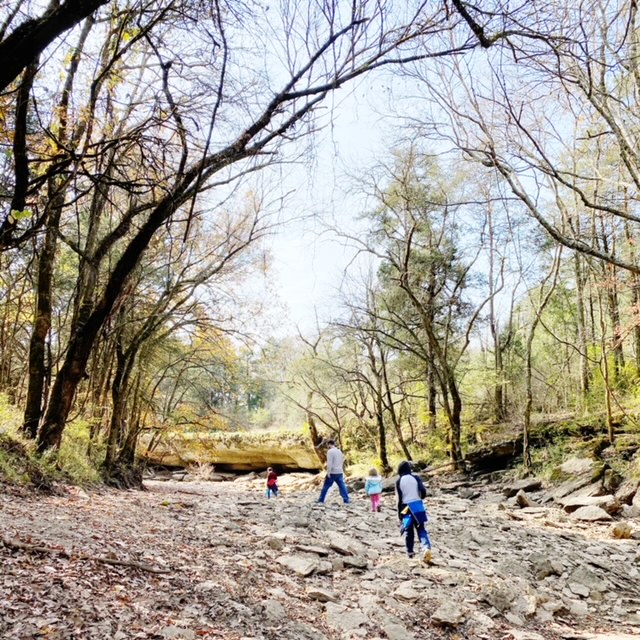
An Example Homeschool Nature Study with The Outdoor Hour Challenges
Let’s say that your family has preschool or young grammar age children. You have a suburban backyard. You have one afternoon a week that you can devote to nature study. You are beginners in the focus area of birds. How will you use the Outdoor Hour Challenges?
- First of all, I suggest that you complete the few pages of reading for the challenge early in the week. Highlight any points you feel would be of interest to your children. I would pick only one or two points to share with young children.
- If there are additional resources available, view those and print out any materials you would like to share with your children after your outdoor time.
- Make the priority of your week’s nature study your outdoor time and make the most of it.
- Prepare the children as much as you can in a way that is appropriate for their ages. If the lesson for the week is to learn about bird’s beaks, you might mention a few facts (check your notes) about bird beaks before you head out the door.
- I might start off our outdoor time with a walk around the yard to see if we find anything new or interesting. If a bird happens along at the feeder or anywhere we can observe it, stop and quietly observe the bird, making special note of the bird’s beak.
- After the birds flies away, take a minute to ask if your child was able to observe anything about the bird’s beak. Was it long, short, pointed, round, black, yellow, bigger than the head, and how did the bird use the beak?
Enjoy your time outdoors together and don’t spend your time lecturing or even talking very much at all.
” there should be as little talking from her (mother) as possible, and what little there is should have a definite purpose.”
Charlotte Mason, volume 1, page 45
With very young children, that would be all that I would expect for a beginning nature study session. There will certainly be something that they are interested in if you are actively walking and searching and listening and experiencing your backyard. You are the key by modeling how interesting things are right there in your own space.
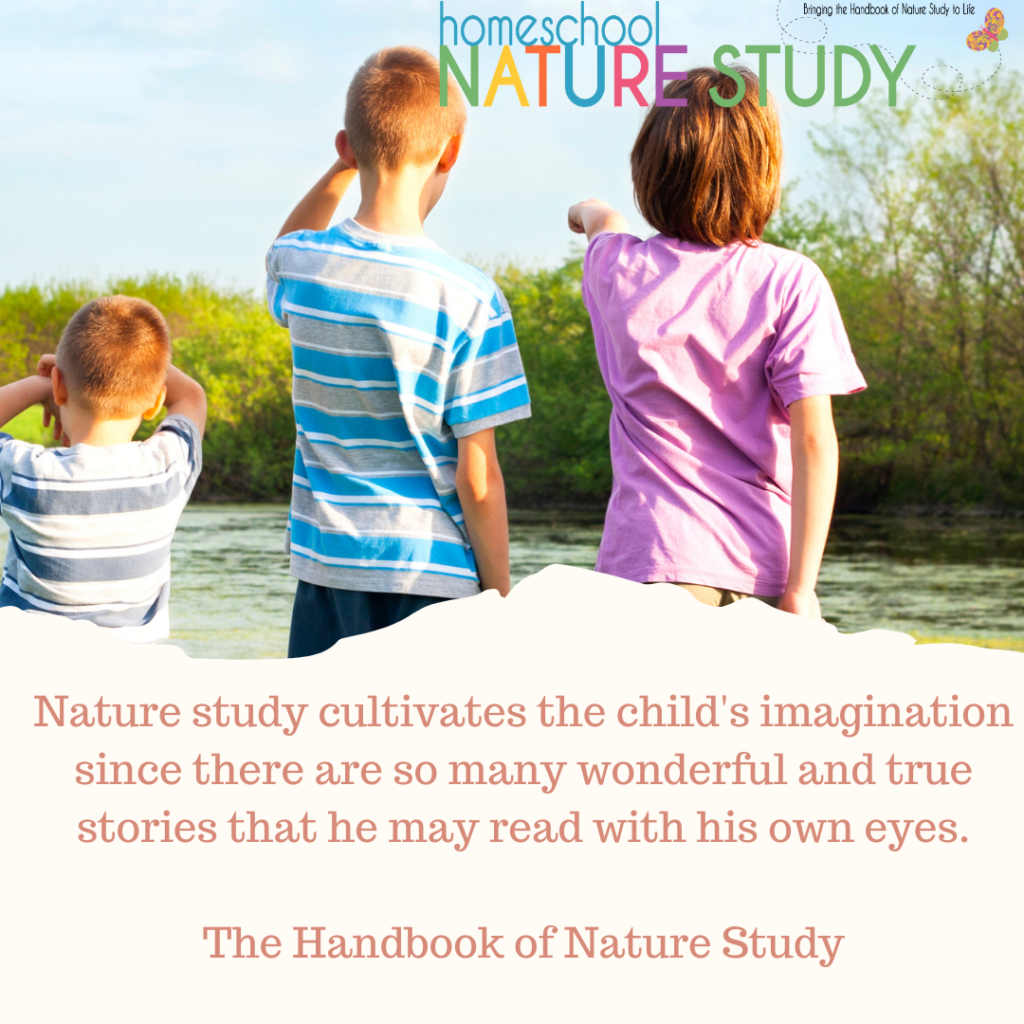
Ideas for Simple Nature Study In Your Homeschool
In our family, when the children were young, we would work and play in the yard together during our outdoor time. Pulling weeds, cutting flowers to bring inside, sitting on the grass and watching the birds in the feeders, sweeping the walk, swinging on the rope swing, tidying the garden, listening to the bees buzz, turning the compost, watering the deck plants, and so on.
Most of these everyday activities led to questions about nature which we would investigate later on either with books we had on hand or during our next trip to the library. Again, be diligent about observing what your child is interested in during your outdoor time. Build on that interest by perhaps reading up on the subject yourself and sharing with them a few facts to get them started. Look up the topic at the library the next time you visit and show your child the section of books on that topic and let them pick one or two to bring home to look at and read together. This makes the nature study lesson not so much like a lesson.
I hope this helps illustrate how you can take the Outdoor Hour Challenges and tailor them to your particular family and habitat. You should feel free to make adaptations to make each challenge special in your family.
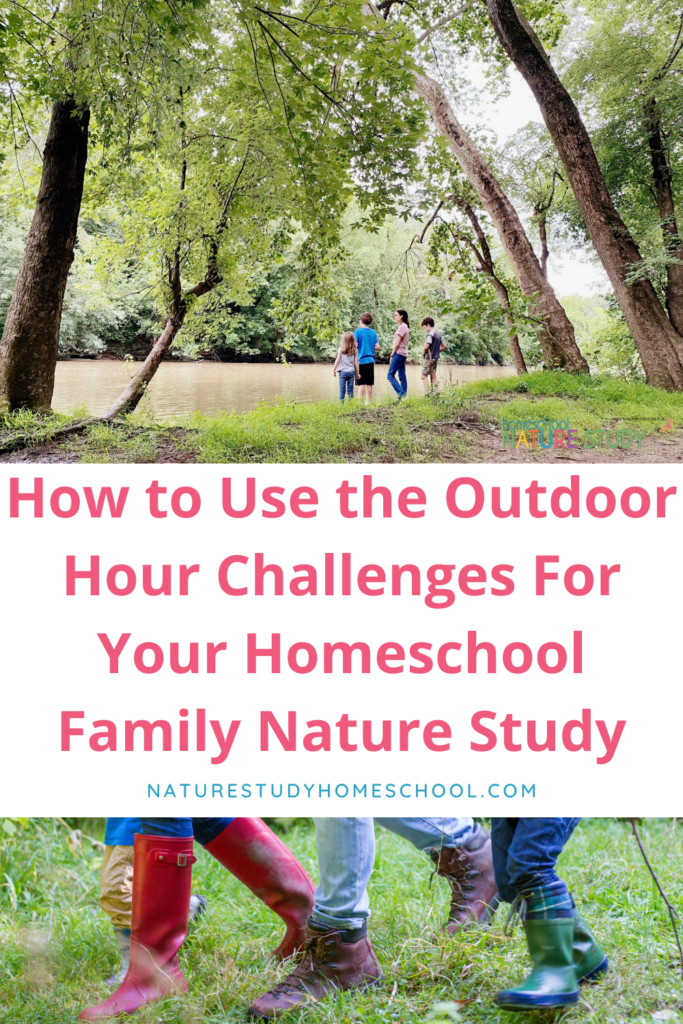
Homeschool Nature Study Membership for Your Family
In Homeschool Nature Study membership, each challenge gives you step by step instructions to get started with simple weekly nature study ideas whatever season you are in! This may just be what your homeschool week needs.
Each challenge is written for you to complete in your own neighborhood or backyard and you can adapt each challenge to fit your local area with suggestions I offer with each topic.
You will be able to use these studies with your whole family and pull it out from year to year and have a nature study resource for all levels.
Be inspired. Be encouraged. Get outdoors!

Tricia and her family fell in love with the Handbook of Nature Study and the accompanying Outdoor Hour Challenges early in their homeschooling. The simplicity and ease of the weekly outdoor hour challenges brought joy to their homeschool and opened their eyes to the world right out their own back door! She shares the art and heart of homeschooling at You ARE an ARTiST and Your Best Homeschool plus her favorite curricula at The Curriculum Choice.

